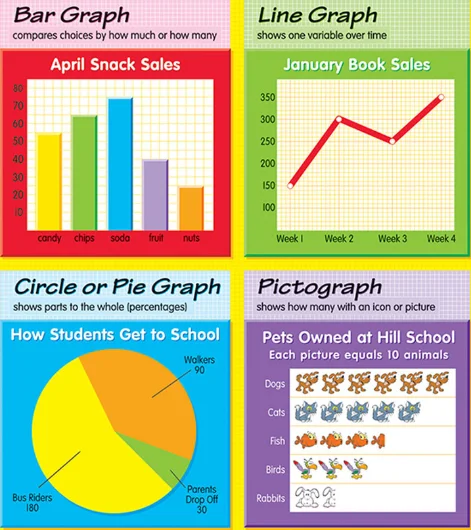The thought of being accused of plagiarism is a very chilling experience. It can affect you at school and the workplace, leading to stress, anxiety, and embarrassment.
There are ways to overcome this unfortunate occurrence and prevent your professors from accusing you. Knowing how to handle these accusations will save you months of stress from having to prove yourself innocent.
How to reduce the similarity between Turnitin and SafeAssign
1. Copy the points, not the text
The technique summarizes the content of a source in your own words while retaining the main ideas, key points, and relevant details.

Doing so prevents you from directly copying and pasting the original text, which would trigger a high similarity score on plagiarism detection software.
Copying the points instead of the text requires a good understanding of the source material and the ability to convey the information concisely and accurately. It also involves proper citation and referencing of the source to avoid plagiarism.
However, it is noteworthy that simply copying the points, not the text, does not guarantee that your work will be completely free from plagiarism.
Plagiarism detection software can detect similarities between the ideas and the structure of the source and your work.
Therefore, students and writers should aim to avoid copying the text and develop their critical thinking and writing skills to produce original and authentic work.
2. Paraphrase
It involves restating the content of a source in your own words and retaining the meaning and message of the original text.
You can convey the same ideas and information as the source material completely differently. This should assist you in avoiding triggering high similarity scores on plagiarism detection software.
To paraphrase effectively, you must read and understand the source material thoroughly. Using different sentence structures, synonyms, and alternative phrases is important to express the same idea.
Additionally, citing and referencing the source in your work is essential.
While paraphrasing can reduce similarity, it is important to ensure that the final work is original and unique.
Changing a few words or phrases is not enough to create an original piece of writing. Therefore, writers must strive to use paraphrasing to supplement their ideas and insights and avoid using other people’s work as a substitute for their own.
3. Rewrite Afresh

Rewriting afresh involves starting from scratch and creating an entirely new piece of writing based on the same topic or content as the original source.
Ensure your work is original and unique and avoid triggering plagiarism detection software.
Rewriting afresh needs a good understanding of the content of the original source. It involves conducting new research and gathering new information and insights.
It takes more time and effort than paraphrasing or copying the points. Thankfully, it ensures that the final product is original and plagiarism-free.
While rewriting afresh is an effective way to avoid plagiarism, it is important to maintain a proper balance between originality and accuracy.
It is still essential to cite and reference any sources used in the new piece of writing, even if the content has been entirely rewritten.
Failure to do so can still be considered plagiarism, resulting in consequences like copying and pasting the original text.
4. Cite Sources
Citing sources involves acknowledging the original author’s work and showing that you have conducted thorough research. It also helps to distinguish your work from others and avoid plagiarism.
One must follow the appropriate citation style, which differs depending on the academic field and institution, like MLA, APA, and Chicago.
Ensure you cite all sources used in your work, like quotes, paraphrases, and even original ideas.
Use accurate and consistent citation formatting throughout your work. It should include in-text citations and a comprehensive reference list. Failure to do so can lead to penalties for plagiarism or academic dishonesty.
It is critical to follow the appropriate citation style and cite all sources used. Use accurate and consistent citation formatting throughout your work.
5. Use Quotations
Using quotations involves directly quoting the original source in your work. You should enclose it in quotation marks to indicate that the words are not yours.

Here, you can include the author’s exact words in your work. Similarly, acknowledge the original author and avoid plagiarism.
When using quotations, use them when the author’s words are still relevant, powerful, or unique.
Also, you must properly cite the original source.
Include the author’s name, the page number, and the work’s title. Failing to cite the original source well can lead to a high similarity score on plagiarism detection software.
While using quotations can be a great technique, it is critical not to rely too heavily on them. Overusing quotations make your work appear unoriginal and can compromise the writer’s critical thinking and insights.
Therefore, writers must balance the use of quotations with their own ideas and analysis to create a unique and original piece of work.
6. Use the first language reported speech
Using the first language involves reporting the ideas and information from the original source in your own words. However, it should retain the structure and tone of the source material.
You can use first-language reported speech, convey the same information and ideas as the source material, and avoid copying and pasting the original text.
When using this technique, attribute the original ideas to the author using phrases like “as stated by” or “according to.” Proper citation and referencing for the original source is critical to prevent plagiarism.
Using first-language reported speech is impactful when presenting the ideas of the original source while also making the work more original and unique.
It indicates an understanding of the original material while allowing the writer to give their own analysis and interpretation. However, it needs a good understanding of the topic or content of the original source and t present the ideas in a new and original way.
7. Copy the idea, not the text

The idea behind this route is to avoid copying the exact wording from a source. Instead, use your language to express the same idea. Such can happen by paraphrasing or summarizing the information you have found.
You can demonstrate your understanding of the material in an original and properly cited way by copying the idea instead of the text.
This approach helps reduce similarity scores and improves your writing skills and critical thinking abilities.
8. Use the source as a model paper
If you want to reduce your chance of getting caught by plagiarism software, you should use the same format as someone else did. While this may seem easy, it can be difficult when many people use these services simultaneously.
To ensure that you get caught less often, you need to use similar methods as other people do to avoid being caught by plagiarism software.
Using a copied word as a model paper means that your paper will likely have a high degree of similarity to the original, which can result in a high similarity score and raise suspicion.
Moreover, it does not demonstrate your understanding of the material or your ability to synthesize and communicate ideas in your own words.
Instead, using academic sources to conduct research and take notes is recommended, then use your own words to write your paper. This way, your paper will have a good Turnitin score while keeping the points you copied.
You can also use proper citation and referencing techniques to acknowledge the sources of your information. This approach demonstrates academic integrity, critical thinking, and writing skills and will result in an original and unique paper with a lower similarity score.
9. Replace figures with images

The process involves taking an existing paper and replacing the text with images, like graphs or charts, to convey the same information. While it may seem like an effective way to lower similarity, it can result in accusations of academic misconduct and plagiarism.
Using images to replace text does not demonstrate your understanding of the material or ability to communicate ideas effectively in writing. Additionally, images alone are insufficient to convey the information and analysis required in academic writing.
It is important to conduct your research and use your own words to write your paper while properly citing and referencing your sources.
If you must include figures or images in your paper, properly cite and reference them. This approach demonstrates academic integrity, critical thinking, and writing skills and will result in an original and unique paper with a lower similarity score.
Conclusion
It is a huge relief to confidently assign your students’ work to their accounts on Turnitin or SafeAssign.
When students submit work on time, and you know that Turnitin will compare it with what’s been submitted in the past, you have confirmation that assignments are authentic.
Ultimately, reducing similarity on Turnitin or SafeAssign demonstrates academic integrity and helps to establish trust between students and instructors.
Editing and proofreading your work can help identify unintentional instances of plagiarism and improve the overall quality of your writing.
By employing these techniques, you can ensure that your work is original, well-written, and accurately represents your ideas and knowledge.
